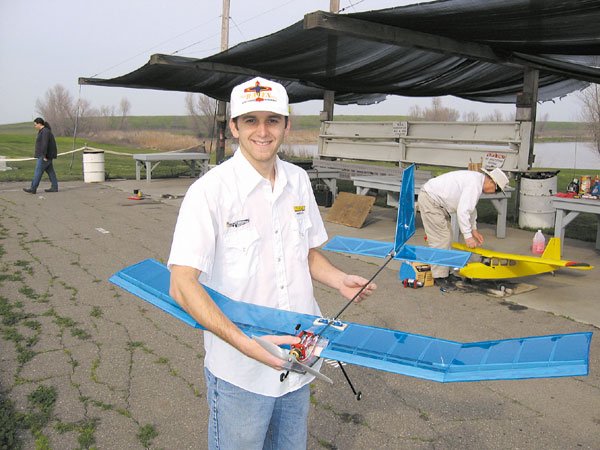Gilroy
– In a field of aeronautical engineers, Jeremy Novara is flying
high.
The Gilroy native, Gilroy high grad and University of
California, Davis senior won the Aero Design Competition hosted by
Lockheed Martin Corporation last month in Fort Worth, Texas.
Gilroy – In a field of aeronautical engineers, Jeremy Novara is flying high.
The Gilroy native, Gilroy high grad and University of California, Davis senior won the Aero Design Competition hosted by Lockheed Martin Corporation last month in Fort Worth, Texas.
Thirty–nine teams from the United States, Australia, France and Canada designed and constructed model airplanes for competition. The goal was to build a plane that could carry heavy cargo during take off and landing.
“We design, we build, then we fly,” Novara said.
His design captured the top overall award in the Micro class category.
“It was a brand new category, so there was no precedent, which I think encouraged creative designs,” he said.
Novara worked with one other student to develop a 12-ounce airplane with a 50-inch wingspan that can lift 3.2 pounds on take off. The plane is constructed from balsa wood and Microlite coating over a carbon composite base. His partner, Ben Hochman, served as the flight instructor, leaving most of the design and construction to Novara.
What is remarkable is not only the fact that he finished first in all three test categories in his Micro class: Technical report, oral presentation and flight demonstration, but that he did it without formally studying engineering.
Novara is an economics major.
He competed against a team of aeronautical and mechanical engineers – and won.
“I bootstrapped it all,” he said.
Novara competed last year, leading a team of 14 other students. They built an airplane with a 16-foot wingspan, which actually lifted the most weight, but finished sixth overall after crashing during flight.
“This year I focused more on design, something I had not really done before,” the 23–year-old explained.
He read some of the required textbooks used in the Davis aeronautical program to apply the techniques to his plane.
His bedroom resembles a garage. Pieces of model airplanes cover the walls and shelves. Parts of engines lay strewn about.
“Where do I look and you don’t see a plane?,” he laughed. “I do have a lot of little models. But if I am going to build something it’s going to have to purpose.”
Interestingly enough, he has never flown any of the planes he built.
“I think it’s indicative of the real world where you’re not going to be flying the planes you design,” he said. Therefore, he relies on a flight instructor to give feedback on its design.
Upon graduation in June, Novara would like to work at a small aeronautical company such as Scaled Composites whose GlobalFlyer design completed the first nonstop solo flight around the world without refueling in March.
“I wouldn’t have any complaints with working in a privately owned spacecraft,” Novara said. “I do have the strongest interest in unmanned aerial vehicles.”
He also plans to obtain his pilot’s license.
But just where his fascination with airplanes comes from is unknown.
“I always went to the Salinas Air Show,” Novara said. “I had a brother in the Navy so I got to see the warplanes. I always wanted to fly.”















